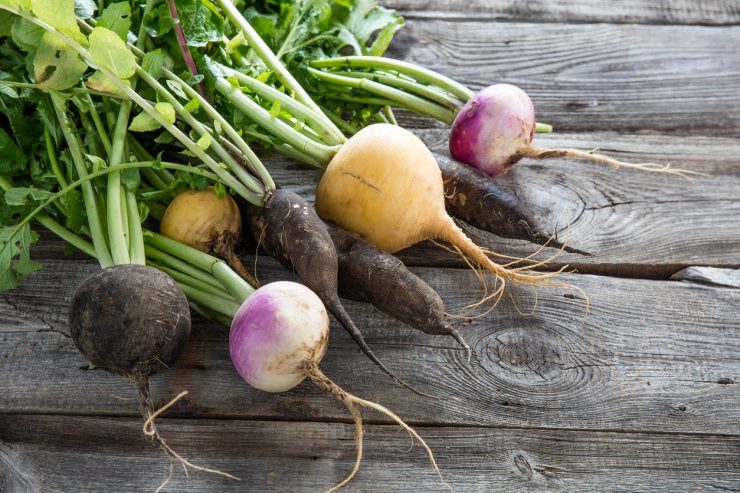
You’re right. Growing root vegetables indoors isn’t exactly on the cover of Garden Glamour magazine. (I just made that up. It’s not a real magazine. But if it was, indoor root veggies probably wouldn’t be on the cover.) Sure, you’ve got your ornamental kale, your hydroponic leaf lettuce, and your indoor herb garden. I’m all for those, especially since I live in New England and can’t grow vegetables outdoors in the winter.
Root vegetables are another story, though. Many of them are fairly hardy and perfectly happy up until some of the coldest of winter days. You can cure them and store them in a root cellar or basement. In other words, there isn’t a lot of call for growing root vegetables indoors.
Except, not everyone has outdoor space for a garden. Or the soil isn’t suitable. Or, especially in the case of root veggies, maybe there are toxic elements in the ground. For that matter, maybe you don’t want to deal with a full-on garden, but would love some fresh, homegrown root vegetables. In that case, let’s take a look at some tips for a successful harvest.
Discover the 3 top options for growing vegetables indoors—when you access the FREEBIE Growing Vegetables Indoors for Beginners, right now!

Growing root vegetables indoors: 7 Tips for delicious roots and shoots
First of all, don’t be intimidated. Growing root vegetables indoors isn’t that much different than growing any other plant indoors. While some plants are more challenging than others, they all need essentially the same things: sunlight, water, and well-drained soil. Plus, we’ll be rooting for you! (Badda bing!)
1. Select the correct container. Some root vegetables, like radishes or garlic, for example, don’t grow particularly deep roots. But if you’re thinking about growing carrots, parsnips, rutabagas, or other similar veggies, you need a pretty deep container. Depending on the vegetable and variety, you’re probably looking at pots that are at least 10- to 12-inches deep.
2. Check your drainage. It’s not a secret that any container you use for plants, vegetables, root vegetables, herbs, and so on needs to have drainage.
3. Use the right soil. Most root vegetables prefer loose, well-drained soil. A potting mix designed for vegetables should work, but take care not to pack it down. You want those roots to have plenty of room to grow!
4. Compost! Big surprise here, right? You know how much we love compost around here, so go ahead and add some to your potting mix.
5. Water regularly. Containers dry out more quickly than raised beds or in-ground gardens. When you’re growing root vegetables indoors, how quickly the soil dries out will depend a lot on how much sun and breeze your plants get, so keep an eye on this.
6. Don’t forget to thin the seedlings. It might look nice to have a whole bunch of foliage above the soil, but that just means the roots are fighting for nutrients under the surface. If too many root veggies are too close together, none of them will grow very well.
7. Give them plenty of light. Check your seed packet to find out how much sunlight your different vegetables need and be sure they get it. You may have to invest in a grow light or two, but that’s money well spent if you grow vegetables indoors, especially throughout the winter.
All in all, aside from making sure that your container is deep enough, if you can grow other plants indoors, you should be just fine growing root veggies, too. And don’t forget that you can eat the greens on a number of them, too. Beet greens are super tasty, you can use carrot greens to make pesto, and turnip greens are a classic.
Have you tried growing root vegetables indoors? What was your experience like?
Discover the 3 top options for growing vegetables indoors—when you access the FREEBIE Growing Vegetables Indoors for Beginners, right now!





In terms of adequate sunlight…Can you set up your containers next to a well lit sliding glass door? Is that an okay source of light to grow root crops? Of course, adjusting the exposure to the crop you are growing.
5 hours of bright indoor sunlight through your sliding glass door should be sufficient.
I’ve tried growing potatoes in those potato bags but not with a lot of success. I suspect I had the wrong soil. I would like to hear from someone who has had success growing potatoes in bagx, boxes, etc.